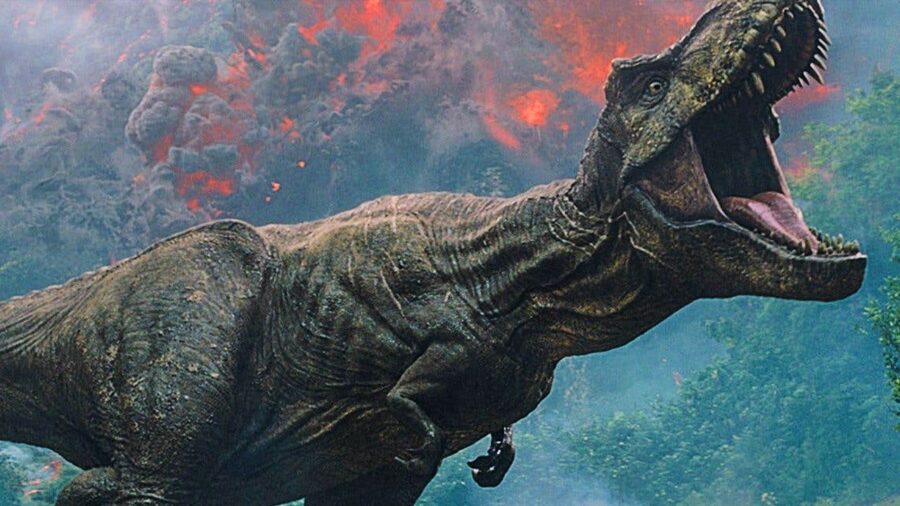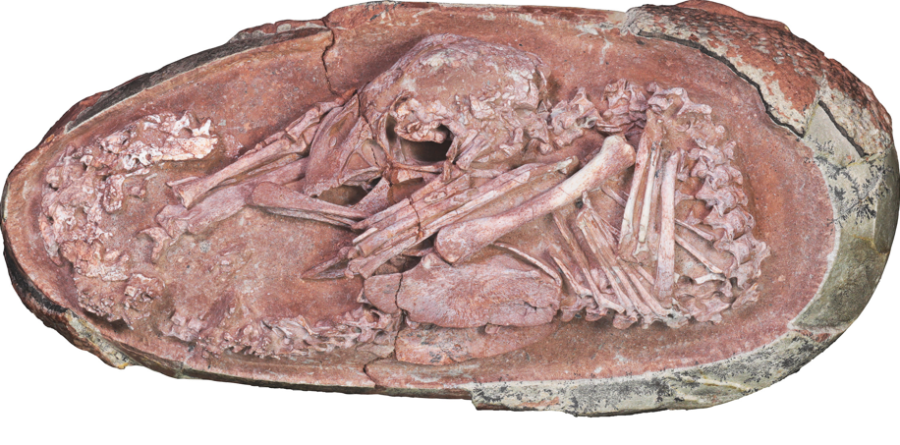Dinosaur Embryo Discovered In Perfect Condition

Scientists have discovered a dinosaur embryo that bears a striking resemblance to that of a modern bird. The dinosaur embryo, nicknamed Baby Yingliang, was sitting in storage for over 10 years in a museum storage room, and sources speculate that it belongs to the oviraptorosaur family. The prevailing hypothesis suggests that this particular embryo may actually reveal a link between dinosaurs and birds, but scientists can’t confirm this theory until similar samples are discovered and researched.
Tucking is an important evolutionary step for this dinosaur embryo, as well as bird embryos.
What’s most telling about the dinosaur embryo is the unborn creature’s position inside the fossilized egg. Curled up in a position that’s known as tucking, Yingliang’s head is oriented under its feathered wings, and tucked within its curled body. This type of prenatal positioning mirrors the behavior of modern bird embryos just before hatching, and suggests that oviraptorosaurs could be early ancestors of our avian friends.

Tucking is an important evolutionary step for this dinosaur embryo, as well as bird embryos. Our current understanding of tucking suggests that creatures who don’t adopt this position during this development phase have a very slim chance of survival once they hatch. Looking at the 3D rendering of the dinosaur embryo, you’d be hard-pressed to think you’re looking at a baby dinosaur rather than a baby bird, so it’s hard not to want to arrive at this conclusion.
Not fully understanding why this dinosaur embryo never made it to birth also raises a number of questions.
Though we’re witnessing one of the most complete dinosaur embryos ever discovered, it’s worth noting that we’re dealing with a sample size of one. Not only will similarly completed dinosaur embryos need to be discovered and compared to the current findings, but subsequent samples will need to span over a considerable length of time to confirm that Yingliang isn’t simply an evolutionary outlier.
But the current research is promising because this discovery marks the first time we’ve ever seen such a fully developed dinosaur embryo.
We also need to consider the fact that this dinosaur embryo may not be the first iteration of a theropod adopting the tucking position like a common bird. That is to say, Yingliang may represent the first evidence we have of tucking from this era, but it may not actually be the first case of tucking. For all we know, there are samples out there that predate Yingliang by tens of millions of years, which will provide more insight into this amazing genetic jump.
Not fully understanding why this dinosaur embryo never made it to birth also raises a number of questions. Since Yingliang died and remained encased within its egg as a late-stage embryo for millions of years, we don’t currently have a working sample of what it may have looked like after it was born. In other words, we don’t know if we’re looking at a working genetic prototype, or the living and breathing proof of concept of a species that was fully realized, in evolutionary terms.
If the hypothesis is confirmed, and the dinosaur embryo is, in fact, fossilized proof of the evolutionary path that eventually led to birds, then scientists will be one step closer to understanding how we got from point A to point B.
Considering that this dinosaur embryo has been sitting in storage for over a decade, there’s no telling what other fossils are waiting to be discovered by researchers. Wouldn’t it be crazy if Yingliang’s second cousin is currently occupying a neighboring storage facility, and we just don’t know it yet?
Source: iScience












